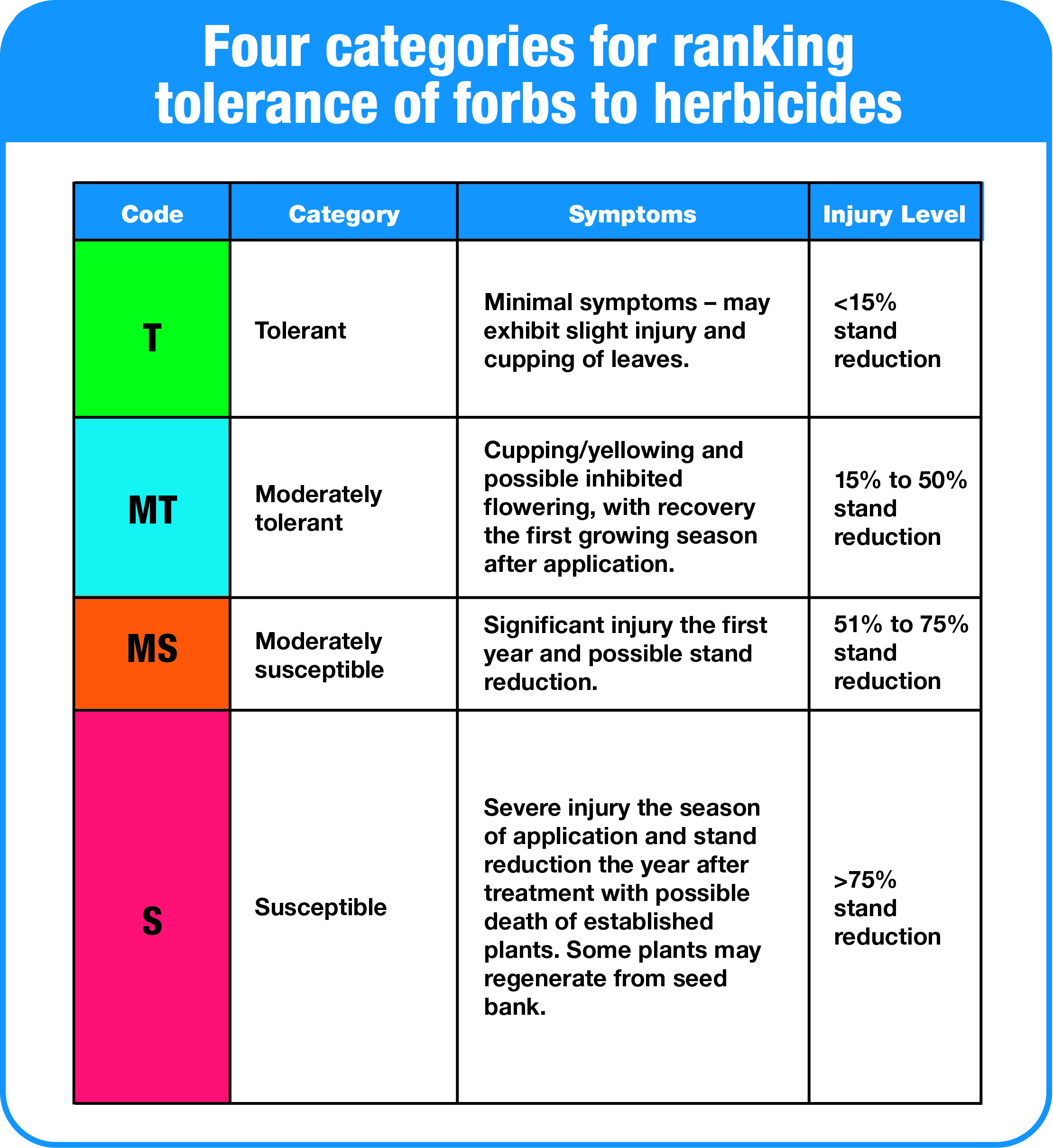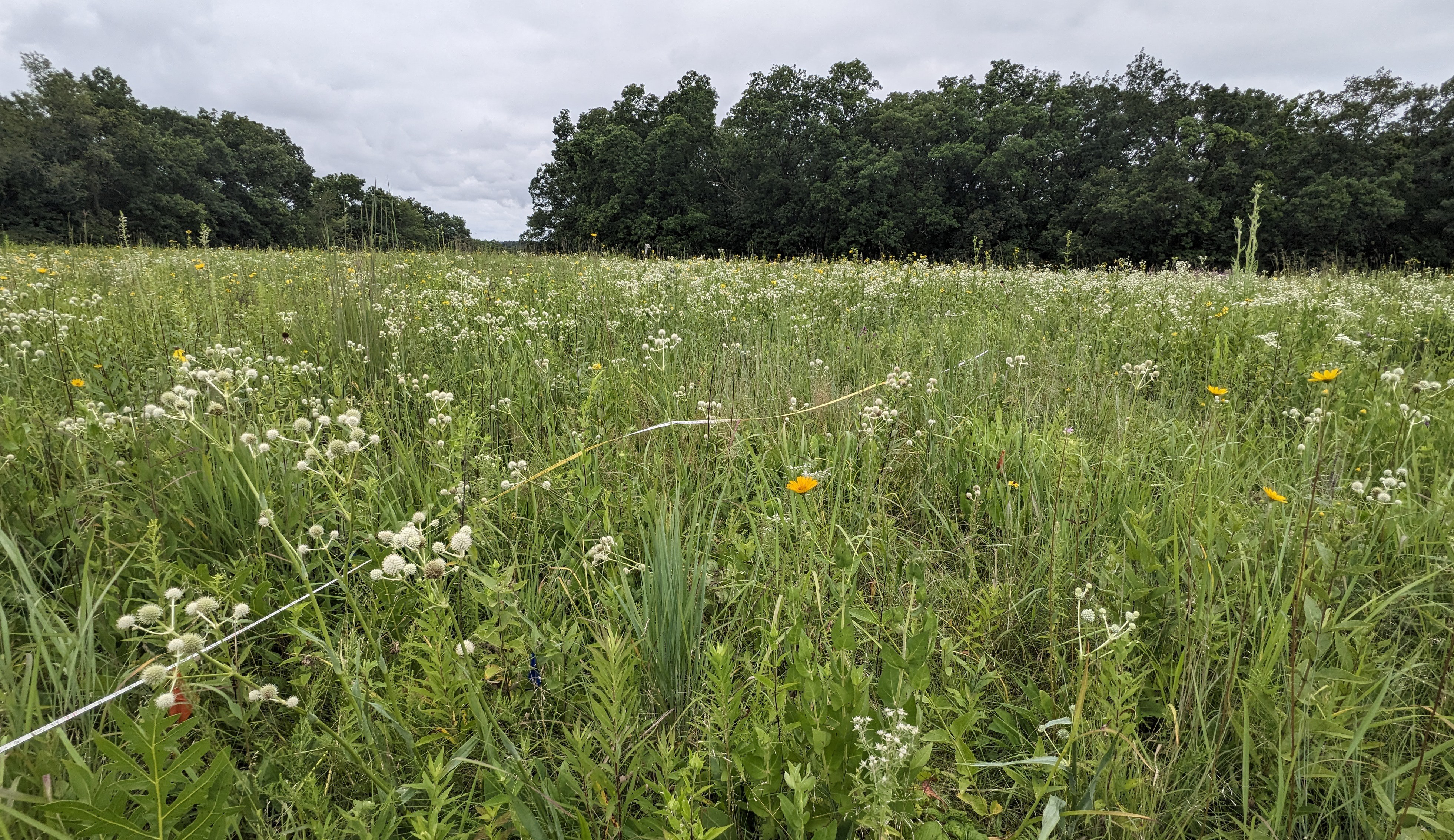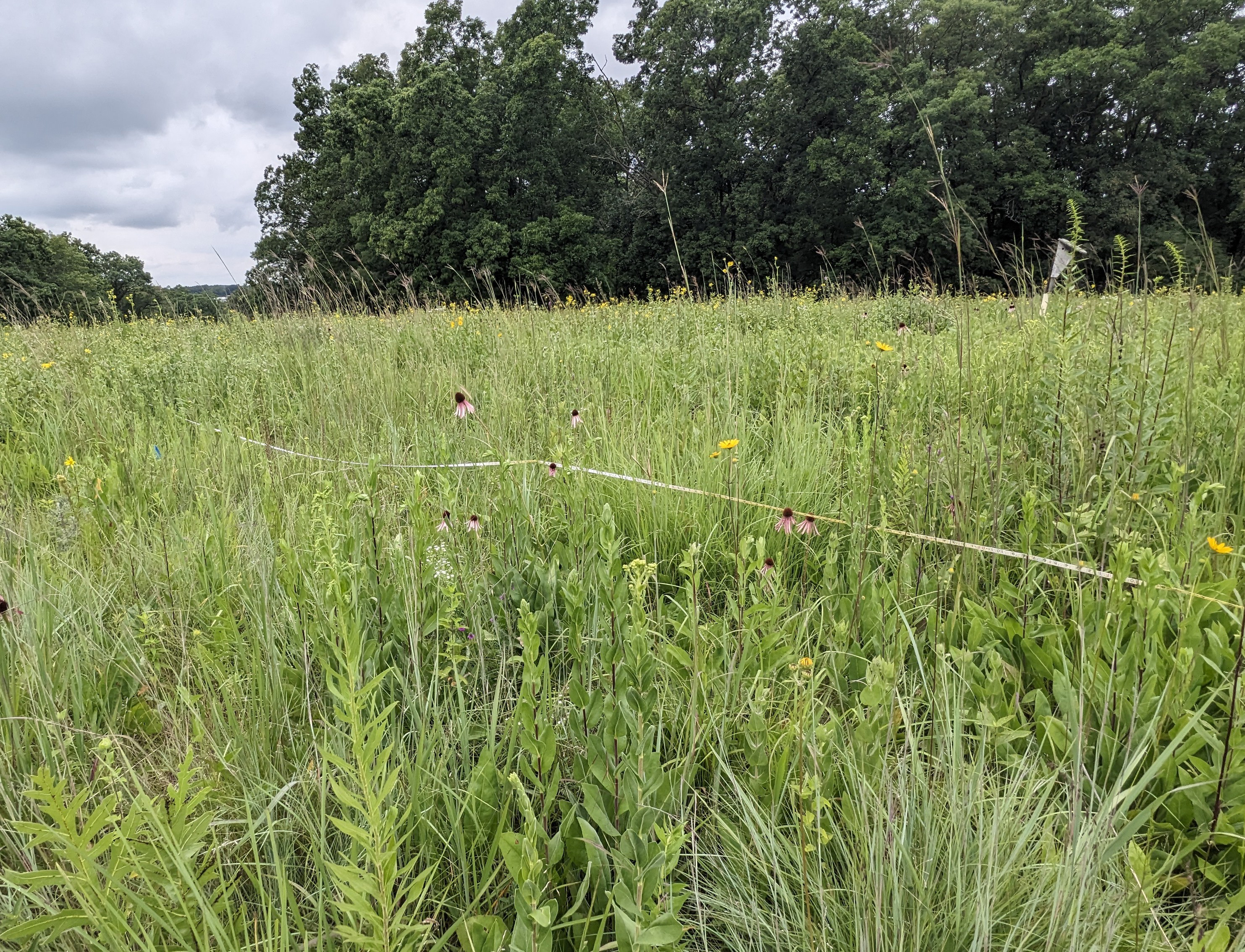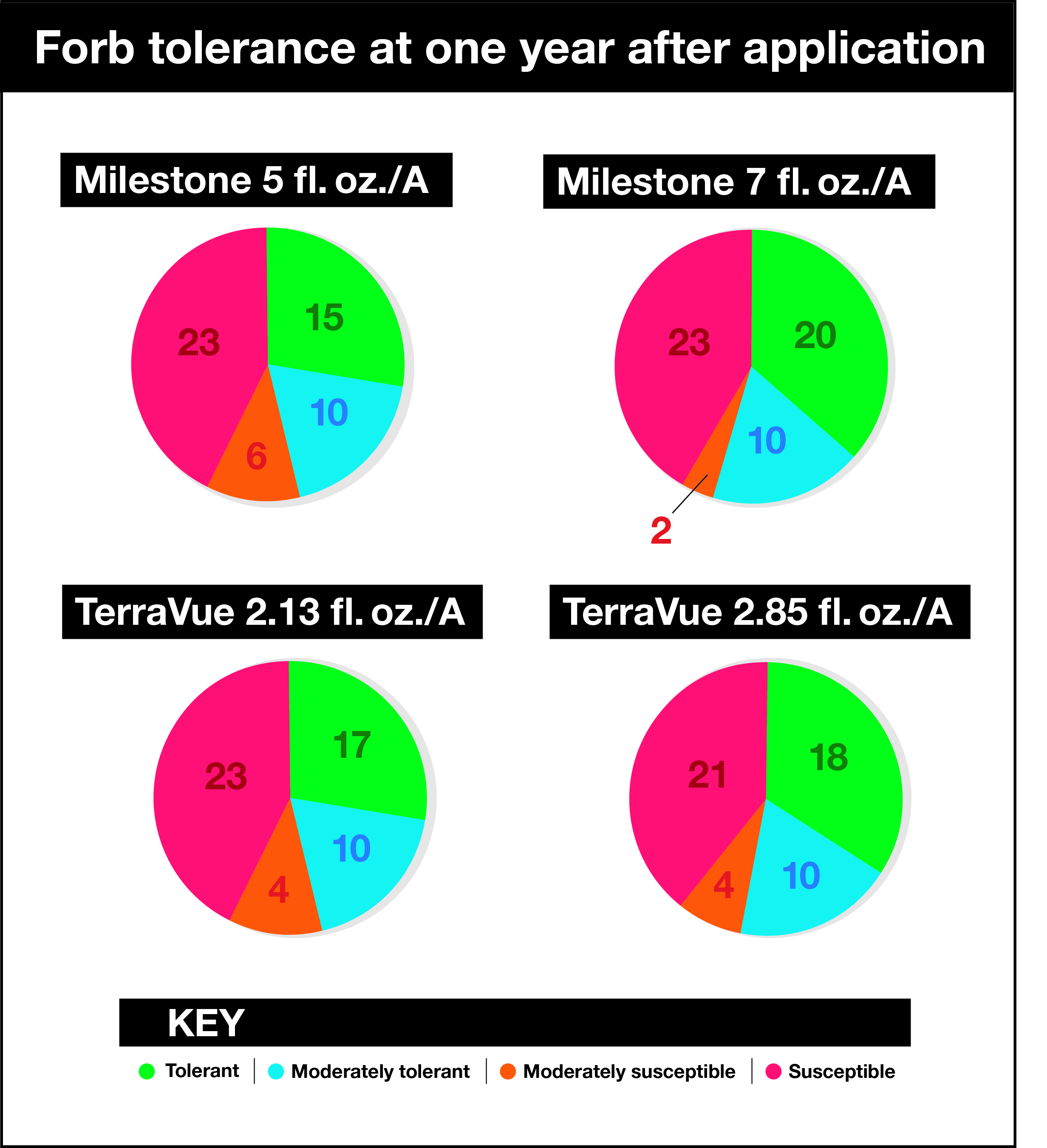For land managers looking to control invasive vegetation, restore landscapes or keep weeds at bay, beneficial forbs are a valuable asset. Where this native vegetation flourishes, there’s less room for invasive species to move in. Forbs also attract pollinators and serve as important sources of food for wildlife. They can even help make lands more resilient to risks of wildfire.
Selective herbicides are designed to control invasive species and weeds with minimal effect on desired vegetation. When it comes to forbs specifically, it’s helpful for land managers to better understand the effects of selective herbicides on these important plant species.
Gathering new data on forb tolerance
Corteva Agriscience recently undertook a study in partnership with the University of Wisconsin to evaluate the effects of different selective herbicide products on a variety of forb species. This study builds on research done in 2013 which evaluated forb tolerance to Milestone® herbicide.1
In the decade since that research, Corteva has introduced new selective herbicide options, including TerraVue® herbicide. TerraVue contains Rinskor™ active, a herbicide active ingredient that offers selective control of broadleaf weeds and tough-to-control or resistant weeds. Rinskor is known to preserve grasses and many types of forbs.
This study was designed to help quantify forb tolerance to TerraVue and compare past tolerance findings for Milestone. While earlier research focused on the use of Milestone to restore natural areas, this study expanded to other common vegetation management scenarios, such as maintaining healthy landscapes in rights-of-way.
Study design2
Trials were conducted in Wisconsin in June 2023. Treated areas were then evaluated for forb species cover at one year after application, in 2024. Treatments were applied at the following rates:

Treatments using TerraVue were designed to use equivalent amounts of Milestone to allow the researchers to separate out any possible tolerance effects specific to the use of Rinskor active.
When the areas were revisited one year after treatment, forbs were evaluated and categorized for tolerance based on the criteria in the chart below.

Observations2
This study confirmed many of the findings from past tolerance studies with Milestone herbicide while adding to the knowledge of forb tolerance with Rinskor active.
After initial application with Milestone or TerraVue herbicides, land managers should expect to see some forb damage. For many annual forb species, however, seed banks remain viable. Likewise, several perennial species demonstrate recovery after initial injury.
By one year after application, most of the species in these trials responded as either tolerant or susceptible. Based on past studies with Milestone, the researchers believe it’s likely that at two years after application, more species will shift to the tolerant category. The team is planning a year-two evaluation to confirm this.

View of one of the study sites one year after application with TerraVue at 2.85 fl. oz./A. This photo shows multiple types of beneficial forbs including rattlesnake master and several sunflower species.

This photo shows a view of another study area one year after treatment with Milestone at 7 fl. oz./A. Healthy populations of coneflower and common milkweed are present, which are two important species for attracting pollinators.
The most commonly tolerant species were common milkweed (Asclepias syriaca), frost aster (Aster pilosus), rattlesnake master (Eryngium yuccifolium), woodland sunflower (Helianthus sp.), stiff-leaved goldenrod (Solidago rigida) and showy goldenrod (Solidago sp.).
The charts below show tolerance by treatment, indicating the number of forb species in each tolerance category.

Choices for weed control and native forb tolerance
This study confirms findings from 2013 and demonstrates similar results for applications of TerraVue® herbicide. Information from this study will be used to update the “Invasive Plant Management with Milestone and Other Herbicides” guide from Corteva Agriscience.
For natural area land managers, this research expands their choices of herbicides and lends confidence to using these selective options in keeping landscapes healthy and resilient over time. Continue to follow TechLine news for more updates on this research and the release of the updated guide.
1 Corteva Agriscience. Field observations, 2013. Data on file.
2 Corteva Agriscience. Field observations, 2024. Data on file.
Under normal field conditions, TerraVue® is non-volatile. TerraVue and Milestone have no grazing or haying restrictions for any class of livestock, including lactating dairy cows, horses (including lactating mares) and meat animals prior to slaughter. Label precautions apply to forage treated with TerraVue and to manure and urine from animals that have consumed treated forage. TerraVue and Milestone are not registered for sale or use in all states. Contact your state pesticide regulatory agency to determine if a product is registered for sale or use in your state. Consult the label for full details. Always read and follow label directions.





